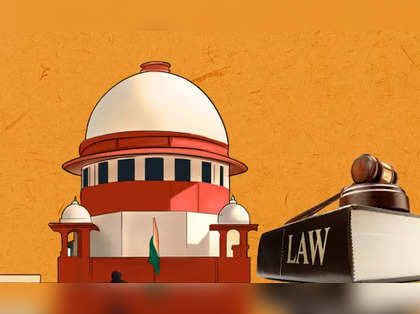Author:Juhi Jain , Student of Teerthanker Mahaveer University , B.B.A. LL.B(H), 4th year .
INTRODUCTION:
The case of Smith v. Johnson revolves around a contentious dispute over property rights between two parties, each claiming rightful ownership of a valuable piece of land. This legal saga, fraught with complexities and emotions, delves into intricate legal principles, human relationships, and the pursuit of justice within the realm of property law.
BACKGROUND:
The genesis of the conflict traces back to a parcel of land located in the heart of Maplewood County, a picturesque region renowned for its lush landscapes and serene vistas. The land, initially acquired by the Smith family through generations of diligent stewardship, held sentimental value and considerable potential for development. However, the tranquility surrounding the property was shattered when the Johnson family, newcomers to the area, laid claim to a portion of the land, alleging historical rights dating back centuries.
LEGAL FRAMEWORK:
To comprehend the intricacies of Smith v. Johnson, one must navigate the labyrinth of property law, where doctrines such as adverse possession, easements, and boundaries wield significant influence. Adverse possession, a doctrine rooted in common law, confers ownership rights to an individual who openly, notoriously, and continuously occupies another’s property for a specified period, typically ranging from five to twenty years. Easements, on the other hand, grant specific rights to individuals over another’s property, often for purposes such as access or utilities. Boundaries delineate the extent of property ownership, serving as the proverbial lines in the sand that demarcate one’s domain from another.
FACTUAL MATRIX:
The crux of the dispute in Smith v. Johnson centers on divergent interpretations of historical documents, surveys, and oral testimonies regarding the boundaries and rightful ownership of the contested land. The Smiths contend that their ancestors acquired the land through a bona fide purchase documented in the county records, thereby establishing clear title and exclusive ownership. Conversely, the Johnsons assert ancestral rights predating the Smiths’ acquisition, supported by oral traditions passed down through generations and purportedly validated by historical land surveys and deeds.
LEGAL PROCEEDINGS:
As the dispute escalated, both parties engaged in protracted legal proceedings, initiating a cascade of motions, hearings, and appeals that tested the limits of judicial patience and legal acumen. The trial court, tasked with resolving the conflicting claims, meticulously examined the evidentiary record, weighed witness testimonies, and scrutinized legal precedents to render a verdict grounded in law and equity. However, the intricacies of property law, compounded by the emotional stakes and personal histories entwined in the case, defied facile resolution, prompting the court to seek guidance from appellate courts and expert witnesses.
JUDICIAL ANALYSIS:
In adjudicating Smith v. Johnson, the judiciary grappled with the fundamental tension between legal formalism and equitable considerations, striving to reconcile abstract legal principles with the concrete realities of human existence. While the letter of the law provided a roadmap for resolving property disputes, the equitable principles of fairness and justice demanded a nuanced approach that accounted for the unique circumstances and interests of the parties involved. Thus, the judiciary navigated a precarious tightrope, balancing the imperatives of legal certainty with the imperatives of social justice.
RESOLUTION:
After years of legal wrangling and soul-searching deliberations, the court ultimately rendered a verdict in favor of the Smith family, affirming their undisputed ownership of the contested land. While the decision provided a semblance of closure to the protracted legal battle, the scars of litigation and animosity lingered, underscoring the profound human toll exacted by conflicts over property rights. Yet, amidst the acrimony and adversity, lessons emerged regarding the enduring resilience of the human spirit, the imperatives of empathy and understanding, and the redemptive power of justice tempered by mercy.
LIST OF CASES :
- Ramkishore Sen v. The State of West Bengal (1966):
This case dealt with the issue of adverse possession under Indian law. The Supreme Court held that a person claiming adverse possession must establish continuous, open, and uninterrupted possession for the statutory period (usually 12 years). Ramkishore Sen v. The State of West Bengal provides guidance on the legal principles governing adverse possession in India.
- State of Rajasthan v. Basant Nehata (2005):
In this case, the Supreme Court addressed the doctrine of part performance under the Transfer of Property Act, 1882. The court held that an agreement to transfer immovable property, even if not registered, could be enforced if the transferee has taken possession and made improvements on the property in part performance of the agreement. State of Rajasthan v. Basant Nehata clarifies the legal principles regarding part performance and equitable rights in property transactions.
- M. C. Mehta v. Union of India (1987):
This landmark environmental case involved the closure of tanneries in Kanpur due to pollution of the Ganges River. While not primarily a property rights case, M. C. Mehta v. Union of India highlights the intersection of environmental protection and property rights. The Supreme Court’s decision to close polluting industries in the interest of public health and environmental preservation reflects the balancing of competing interests, including property rights.
These case laws provide insights into the legal principles, precedents, and regulatory framework governing property rights and disputes in India. They offer guidance on issues such as adverse possession, part performance, constitutional protections, and the balance between individual rights and the public interest in property matters.
CONCLUSION:
Hence it is a testament to the complexities inherent in property law, the vagaries of human nature, and the quest for justice in a world rife with ambiguity and discord. Through its labyrinthine twists and turns, the case illuminates the inherent tensions between legal formalism and equitable considerations, inviting reflection on the moral imperatives that undergird the edifice of law. As society grapples with evolving notions of property, identity, and community, the lessons gleaned from Smith v. Johnson resonate as a poignant reminder of the enduring quest for truth, fairness, and reconciliation in the pursuit of justice.




